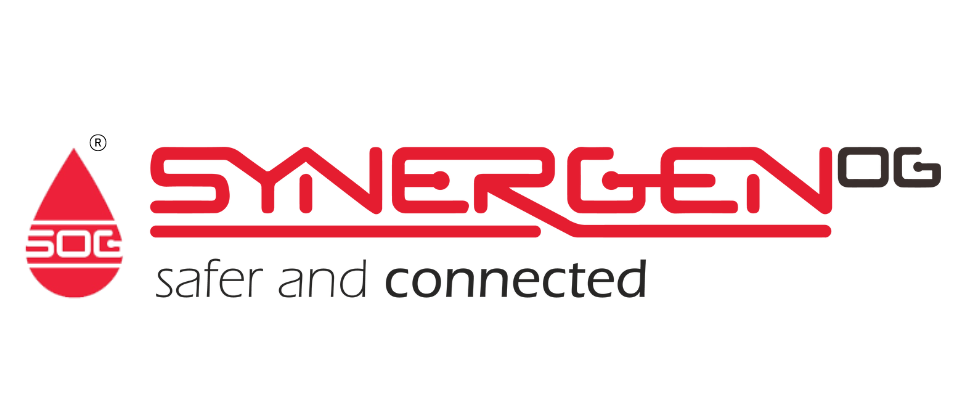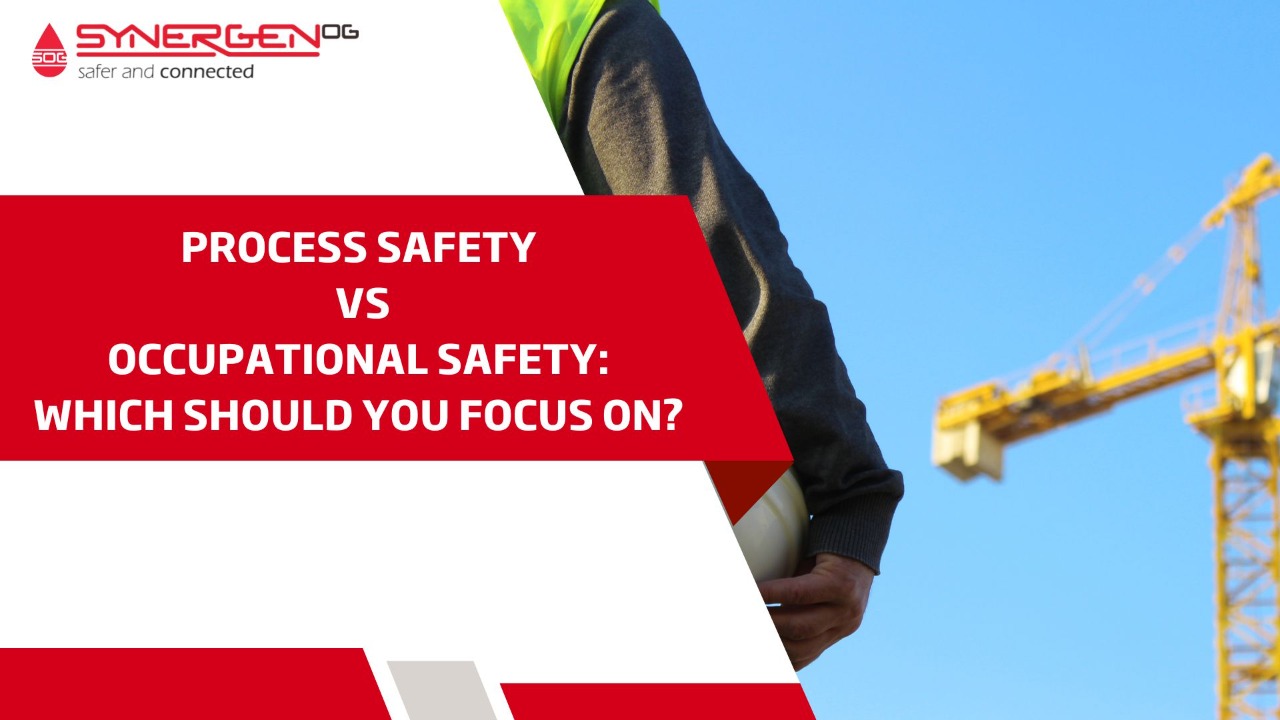When it comes to safety in the workplace, there are two main types of safety to be aware of : Process Safety and Occupational Safety. Both are important in ensuring a safe work environment, but they have different focuses.
Process Safety Vs Occupational Safety – Process safety concerns with the dangers associated with the processing facilities that contain hazardous materials. In contrast, occupational safety involves the overall working environment and the hazards posed to workers in their day-to-day activities.
Understanding the differences between these two types of safety is important in maintaining a safe workplace for all employees. Here’s a closer look at process safety vs occupational safety.
What is Process Safety
Process safety is a management system that prevents major accidents such as explosions and fires in processing facilities. For example, if you are operating an oil refinery with a spill of flammable liquid (like gasoline), you need to implement process safety.
Process safety prevents major accidents involving releasing hazardous materials from process plants and equipments. It covers the design, operation, maintenance and modification of process plants and the effects of human and organizational factors on process safety.
Many process safety hazards can occur in any industry. Some of the most common process safety hazards include:
- Fires and explosions
- Toxic releases
- Reactive chemical incidents
- Pressure vessel rupture
- Equipment failure
To prevent these hazards from occurring, it is important to have good process safety management in place. This includes having proper procedures and controls in place, as well as adequate training for employees.
Also Read: Your Guide to Implementing Process Safety Management Effectively
Process Safety Examples
There are a variety of process safety examples that help to illustrate the differences between process and occupational safety.
Chemical plants where many chemicals are used and stored. If one of these chemicals were to leak, it could potentially cause a fire or explosion. This type of event would be considered a process safety issue.
Process safety examples also include
- Preventing fires and explosions in facilities handling flammable materials
- Controlling pressures and temperatures in reactors and distillation columns
- Managing risks associated with storage tanks containing toxic or combustible liquids
In each of these cases, the goal is to prevent an uncontrolled release of energy or material that could cause harm to people or damage to equipment.
What is Occupational Safety
Occupational safety is the study and practice of protecting workers from workplace hazards. It is the promotion and creation of a safe and healthy working environment.
It covers various topics, including ergonomics, slips and trips, manual handling, work-related musculoskeletal disorders (MSDs), stress, workplace violence and more.
Worker’s health and safety are managed at the executive level, involving employee compliance and quality oversight. The Occupational Safety and Health Administration (OSHA) sets standards for worker health enforced by law.
There are many potential occupational safety hazards in any workplace. These hazards can be present due to the type of work being performed, the materials being used, the equipment being used, or the work environment. Some common occupational safety hazards include:
- Slips, trips and falls
- Electrical hazards
- Ergonomic hazards
- Exposure to hazardous materials
- Fire and explosion hazards
- Machinery hazards
Employers need to identify and assess the risks of these hazards.
It is also essential to conduct regular inspections of the work environment and train employees to recognize hazards and report them. This can be done through a company-wide training program covering topics such as safety procedures for equipment use and what behaviours are expected from workers during their employment.
Occupational Safety Examples
There are many examples of occupational safety that fall under the umbrella of process safety.
Use of personal protective equipment (PPE). It is designed to protect workers from exposure to hazardous materials. PPE can include items such as gloves, respirators, and protective clothing.
Implementation of safe work practices. These are procedures that workers must follow to stay safe while performing their tasks.
Safe work practices can vary depending on the industry, but some common examples include proper lifting techniques, avoiding loose clothing around machinery, and using appropriate Personal Protective Equipment (PPE).
Process Vs. Occupational Safety
Here’s a look at the difference between occupational safety vs. process safety:
| Process Safety | Occupational Safety |
| Focuses on the prevention of major accidents. | Focuses on the prevention of injuries and illnesses in the workplace. |
| Addresses the risks associated with hazardous materials and processes. | Addresses the risks associated with working in hazardous environments. |
| Process safety programs are typically developed and implemented by both employers and regulatory agencies. | Occupational safety programs are typically developed and implemented by employers. |
Why Are They Important?
Both are important, but they have different focus areas.
There are several reasons why process safety is so important.
- Accidents that involve the release of energy or hazardous materials can be extremely destructive and cause serious harm to people and the environment.
- These types of accidents are often preventable if the right precautions are in place.
- Even when an accident does occur, effective process safety management can help minimize the consequences.
Occupational safety is also important, but for different reasons.
- The main goal of occupational safety is to protect workers from injuries or illnesses that could occur while they are on the job. This includes everything from slips and falls to exposure to hazardous materials.
- Like process safety, occupational safety is also about prevention.
- By taking steps to protect workers from potential hazards, employers can help create a safer workplace for everyone.
Focus On Process Safety or Occupational Safety?
The answer depends on the specific industry and workplace. In some cases, process safety may be more important, while in others, occupational safety may take precedence.
However, in all cases, it is important to consider both aspects of industrial safety in order to create a safe and healthy work environment for employees.
Process Safety and Occupational Safety Are Complementary, Not Exclusive
Process safety and occupational safety are not mutually exclusive but rather complementary. Process safety aims to prevent incidents that harm people, while occupational health and safety aims to keep people safe from injuries and illnesses.
Together these two practices help ensure that workers have a safe working environment in which they can do their job without any undue risks or stresses.
A simple metaphor is illustrated below:
Process hazards and occupational hazards are two completely different things, but they both require constant vigilance.
The process hazard is akin to the tiger. It hunts alone, it’s uncommon, and it’s a killer. The occupational hazard is akin to the lion. It hunts in packs, is often visible, and is common in its environment.
Both are untamable, can never be left unguarded and requires constant vigilance.
FAQ - Process Vs Occupational Safety
- What are the 4 types of processes?
There are four primary types of processes: chemical, physical, biological, and psychosocial. Each type of process presents its unique safety hazards that must be controlled to protect workers.
- What are the 3 types of safety?
There are three types of safety: physical safety, emotional safety, and financial safety.
Physical safety is the freedom from physical harm.
Emotional safety is freedom from psychological harm.
Financial safety is freedom from financial hardship.
- What are the types of occupational safety?
There are many types of occupational safety, but some of the most common include slips and trips, manual handling, working at heights, and machinery safety.
- What is the main goal of occupational safety?
The main goal of occupational safety is to ensure that employees are protected from workplace hazards.
- What is the difference between safety and occupational health?
Safety is concerned with the prevention of injuries due to physical, chemical, or biological agents. On the other hand, occupational health focuses on the diagnosis and treatment of work-related injuries and illnesses.
- What is the difference between process safety and technical safety?
The main difference between process safety and technical safety is that process safety focuses on preventing the release of hazardous materials. In contrast, technical safety focuses on safeguarding people, property, and equipment.


[…] Read more on process vs occupational safety – https://synergenog.com/process-safety-vs-occupational-safety/ […]
[…] Read more on process vs occupational safety – https://synergenog.com/process-safety-vs-occupational-safety/ […]
[…] Read: Process Safety Vs Occupational Safety […]
[…] the heart of any effective process safety system is visible leadership and organizational dedication. Senior management must actively support […]
[…] Process hazards refer to risks arising from the design, operation, or failure of a system or process, particularly those involving hazardous materials or energy transformations. These hazards have the potential to cause large-scale accidents such as fires, explosions, toxic releases, or system-wide shutdowns. What makes process hazards particularly critical is their potential for high impact, affecting not only workers but also communities and the environment. […]
[…] An toàn quy trình là một ngành quản lý tập trung vào việc ngăn ngừa các tai nạn lớn như cháy, nổ, giải phóng hóa chất độc hại và hỏng hóc thiết bị trong các cơ sở xử lý vật liệu nguy hiểm, chẳng hạn như nhà máy hóa chất, nhà máy lọc dầu và cơ sở sản xuất khí đốt. Nó nhằm mục đích kiểm soát các mối nguy hiểm liên quan đến rò rỉ, tràn, quá áp, ăn mòn và các trục trặc thiết bị khác có thể dẫn đến các sự kiện thảm khốc ảnh hưởng đến con người, môi trường và tài sản56. […]